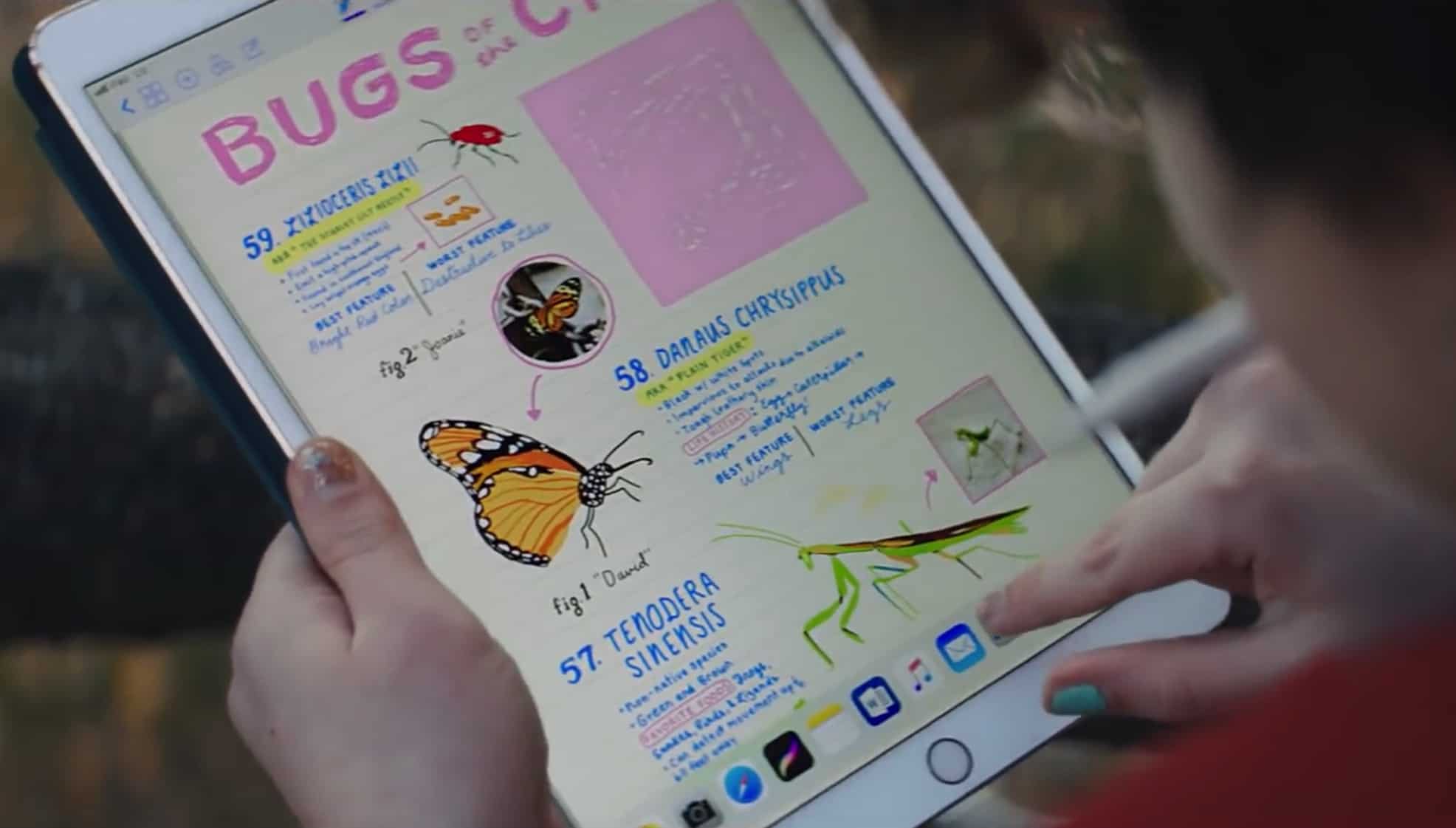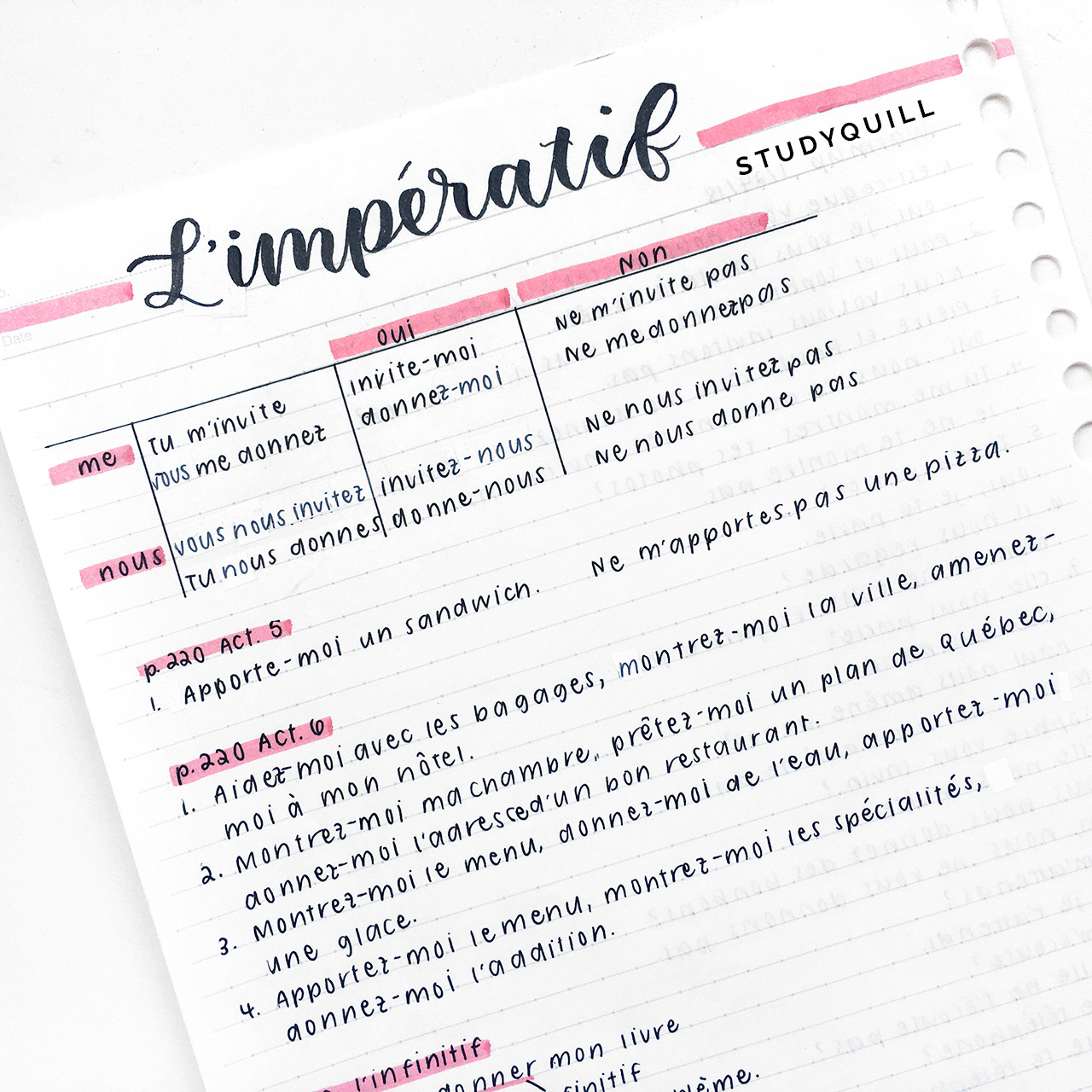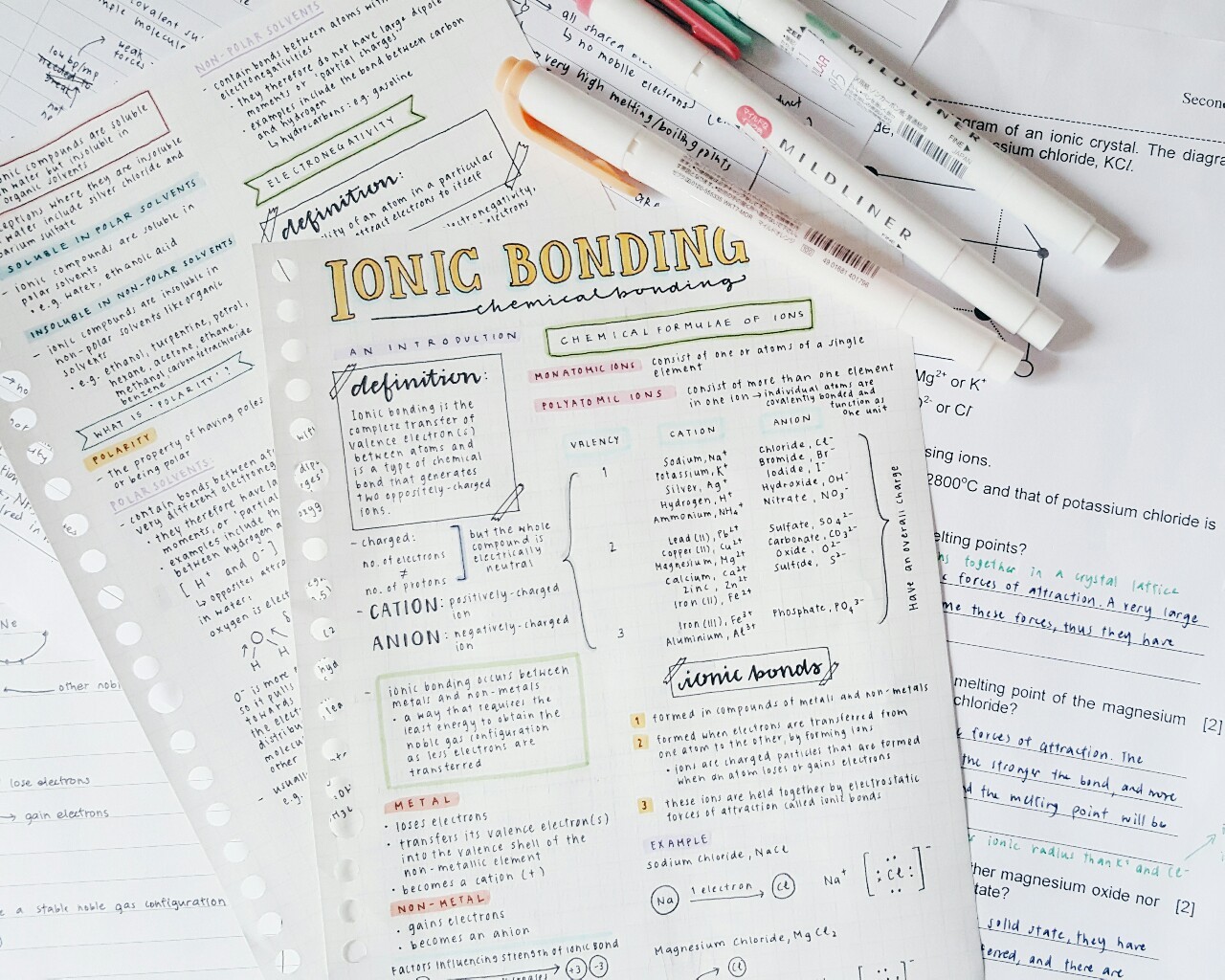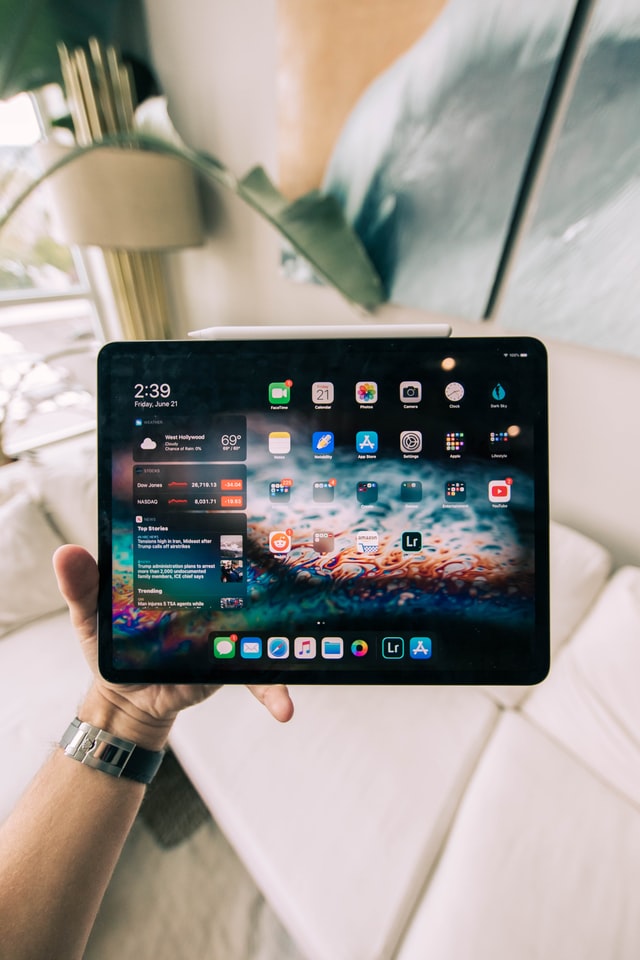
How Top Students Study *Secret Methods Revealed*
Everyone wants to be the top student. But the big question is how?
You see them in your class, getting their exams back with a 97%. They make it look so easy. But what most people don’t realise is the great work ethic, good organisational and time management skills behind their success.
Top students focus on methods that help them learn, they study when they feel the most awake, they are super organised, they set SMART academic goals, they study in short spaced out bursts, they test themselves as often as possible, they use science based study methods such as spaced repetition, they use homework as a tool to learn not for studying, they don’t read through textbooks as study, they do endless practice exams, they ask questions and seek explanations, they study their exam mistakes and they are busy with side projects, sport and other hobbies.
If you want to be a top student continue reading for in-depth explanations of all the top students’ secret study methods revealed.
1. Focus On Methods That Help You Learn
There is an abundance of study tips and methods out there on the internet and not all of them are suited for everyone. Top students test out different methods of learning and figure out what works for them best. They then stick to them to form great study habits that lead to success.
There are many different types of learners such as visual learners, auditory learners, kinesthetic learners etc. Each type of learner has a vastly different way of interpreting and learning information. If you find out what type of learner you are you can set yourself up for success by implementing the best study methods for yourself. You could take a test online to find out what type of learner you are like this one here.
If you are a visual learner, you should read about the 8 best study tips for visual learners here.
2. Study When You Feel The Most Awake
Top students study when they feel the most awake. You don’t need to follow the routines of scientific research on the optimal times to study, wake up early and study and all the other tips like that.
- If you are a morning person, study in the morning.
- If you are a night person, study at night.
I think trying to conform to a strict routine of waking up early and going to bed really early can be more stressful than beneficial. It’s better to find a routine that works for you rather than force yourself into something suggested.
3. Be Super Organised
All top students are super organised. It lets them plan their days to learn the most and also get to do the things that they want. This balance is super important.
Most top students use a diary or planner to organise their day and study. I wrote an article on the best undated student planners that you could read if you are interested in boosting your productivity.
In short, I personally love planning my day as a student with my digital student planner on my iPad pro. If you use an iPad or love digital planning you should totally give it a try.
Here is a screenshot of a daily plan in my personal digital student planner:
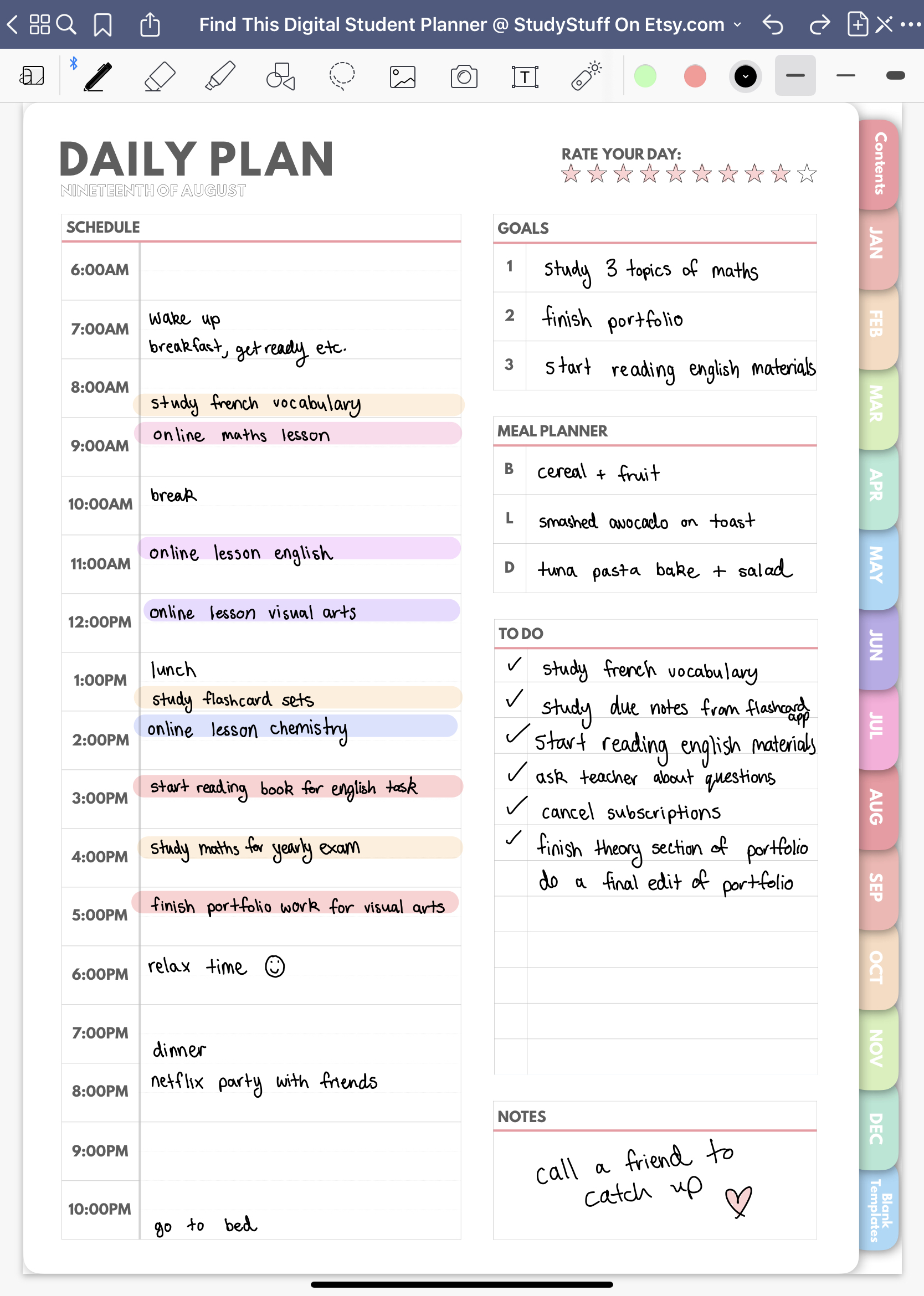
As you can see I have scheduled my ultimate day with this planner, colour coding it with different coloured highlighters. My favourite bit of this planner is the section where I can set 3 daily goals. It’s a super achievable amount of goals for one day that always sets me up for success.
4. Set SMART Goals
Top students also get SMART study goals that keep them motivated and on track. The SMART goal acronym stands for:
S – specific
M – manageable
A – attainable
R – realistic
T – time bound
When you are setting academic goals whether they are short term, mid term or long term it is important to set SMART goals. Smart goals are a lot more achievable because they are specific, manageable, attainable, realistic and time bound.
You might have the goal of becoming a top student. However just saying that is a bit broad. You should use the SMART goal framework to make an action plan to lead you on the path of achieving it.
In my digital student planner there is a great template for setting goals using the SMART goal framework. It takes you step by step through setting a focus, creating a time frame, assigning an accountability partner, stating a reason why you want to achieve the goal, creating a detailed action plan as well as completing a reflection activity after finishing the goal.
5. Study In Short Spaced Out Bursts, Not Marathons
Top students study like pro athletes, in intense spaced out bursts. Not long marathons the night before. If you spend 15 minutes studying everyday leading up to an exam, instead of 1 hour and 45 minutes cramming just before an exam, you set yourself up to be a lot less stressed and more confident in your knowledge.
If you fall victim to always cramming for your assessment task, you should read my article with the best tips on how to stop cramming here!
6. Test Yourself As Often As Possible With Active Recall
Top students constantly test themselves on what they are learning and also things they have previously learned as revision. They use active recall which is an efficient learning process that stimulates your memory. This is in contrast with passive learning where material is read or watched etc.
For example, a top student might create flashcards as an active recall study method. They write relevant questions on one side of the card, ask themselves the question and answer it outloud. They then check the other side of the card where the answer is to check if they got the answer right and what information they might have gotten wrong or missed out on.
If you are interested in learning more about active recall and flashcards you should read my article on how to study flashcards with the leitner method here.
7. Spaced Repetition For Maximum Information Retention
Spaced repetition is a scientific research based phenomena that top students use for maximum information retention. Research shows that cramming, for example repeating a fact twenty times over in one day is dramatically less effective than repeating something a few times in a week. This is due to the fact that the brain needs time to form the synaptic structures and connections to do with the new information before it can be put into long-term memory.
Top students maximise their memory retention by studying information with a routine that follows overcoming the curve of forgetting. This spaced out revision might follow a schedule like:
- Revise after 1 hour
- Revise again 1 day later
- Revise 3 days later
- Revise 1 week later
- Revise 2 weeks later
- Revise 1 month later
- Revise 3 months later etc.
I have a printable tracker that can help you keep track of when to revise your class content which you can find here.
For more information read how to overcome the curve of forgetting today!
8. Homework Isn’t Studying
I think a lot of people believe that doing all the homework will equal success in exams. But it isn’t the case at all. In fact, most top students don’t complete all of their homework.
Homework is a tool to practice what you have learned in class and check your understanding of it. But it can be very repetitive and a waste of time if you do every single question. For example, in your maths homework if you are doing questions, are confident in it and getting them all correct, you are wasting your time continuing doing similar exercises. Move onto something more challenging.
Also doing the homework one day doesn’t mean you will remember everything the next week. You need to revise what you have learned at a later date (in set intervals like spaced repetition) if you want to do well in an exam.
9. Don’t Read Through The Textbook As Study
Another trap many students fall into is re-reading their textbooks and notes as a way to study. The problem with this is that it can give you a false sense of knowledge as you recognise the information as you read it but don’t truly know it.
As I went through in the above section it is super important to test yourself with active recall for studying. This means formulating questions in your head, closing your textbook and saying the answer out loud. Top students use methods like this.
10. Do Practice Exams, Practice Exams and More Practice Exams
Don’t waste your time making notes as a study method. Practice exams are the best way to get a good idea of how you are actually doing in a course and are a very valuable learning resource. You should always try to do practice exams under exam conditions as well, without a textbook or the internet. New exams can only be original to a certain extent. They all have overlap and similar questions. So the more practice exams you do, the better equipped you will be for your real exam.
You can find heaps of past papers online or ask for them from your teachers. Try to do the most recent past papers first as these will be the most relevant as they are probably working off the same syllabus. If you are looking for past papers online search for them from top schools and universities as these will generally be much harder.
11. Ask Lots Of Questions & Seek Answers
If you don’t know the answer to something or are unsure about a concept you should stay back after class or send your teachers an email asking for an explanation. All top students do this to ensure that they have a good understanding of all their class content. By keeping up to date with content like this, you also won’t fall behind.
12. Study Your Exam Mistakes
When top students get their exam results back they do not look at the mark and stuff it to the bottom of their bags and never look at it again. It’s really important to take the time to go through your past exams and find out where you went wrong so you don’t make the same mistakes in the future. If you make a mistake and see where you went wrong you will ever forget it too.
13. Be Busy With Side Projects, Work, Sport etc.
Most top students have a very busy schedule and this works in their favour that they have less time for procrastination. The busier your schedule, the less time you have to think about studying and rather just do it. It also forces you to study smarter, not harder and focus on the most important content.
Before You Go!
Check Out The Digital Student Planner Mentioned In This Article
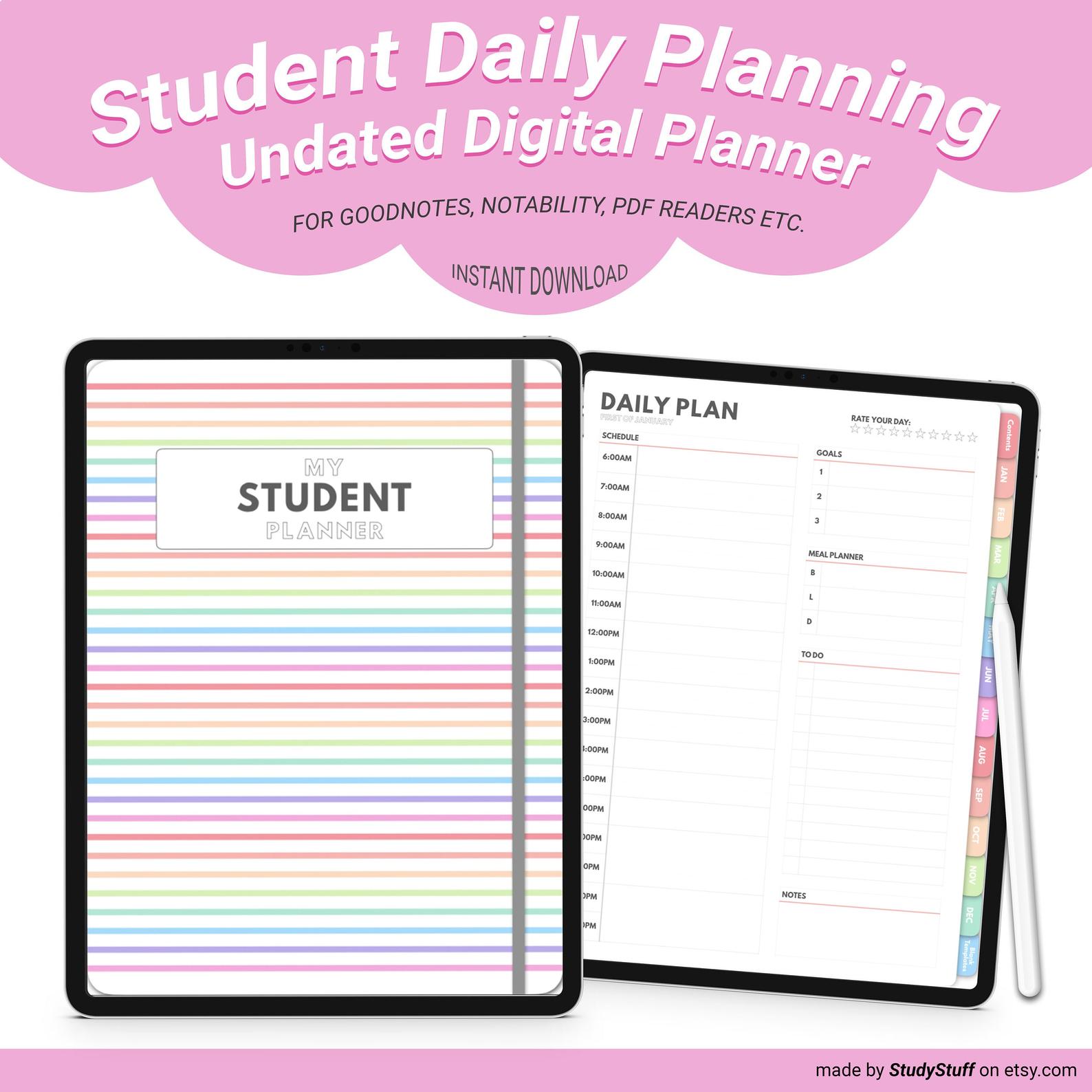
You Might Also Be Interested In The Digital Language Learning Planner
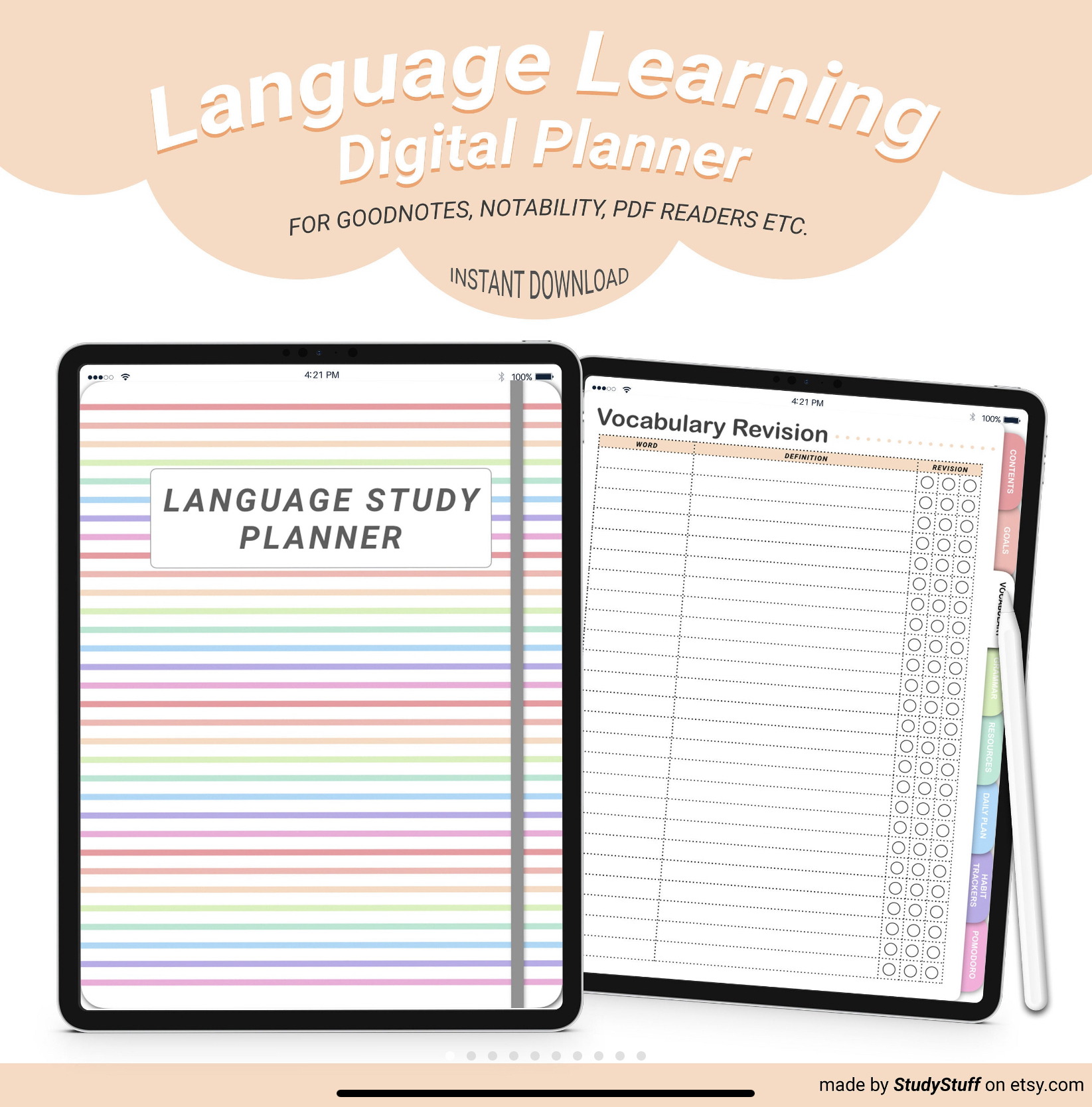
If you take notes using your iPad, you need to know these 12 iPad note taking tips! They will make …
There are many different note taking methods that can work well for language learning. To take effective notes for language …
To take pretty notes you need to firstly choose a consistent colour scheme. Next you should draw an eye catching …
To take notes on a PDF on an iPad you need to use a note taking or PDF reading app …
To get motivated to do school work one should set SMART goals, work in a motivating environment, break large projects …
To take aesthetic notes one needs to choose a consistent colour scheme, use eye catching titles and headers, invest in …

